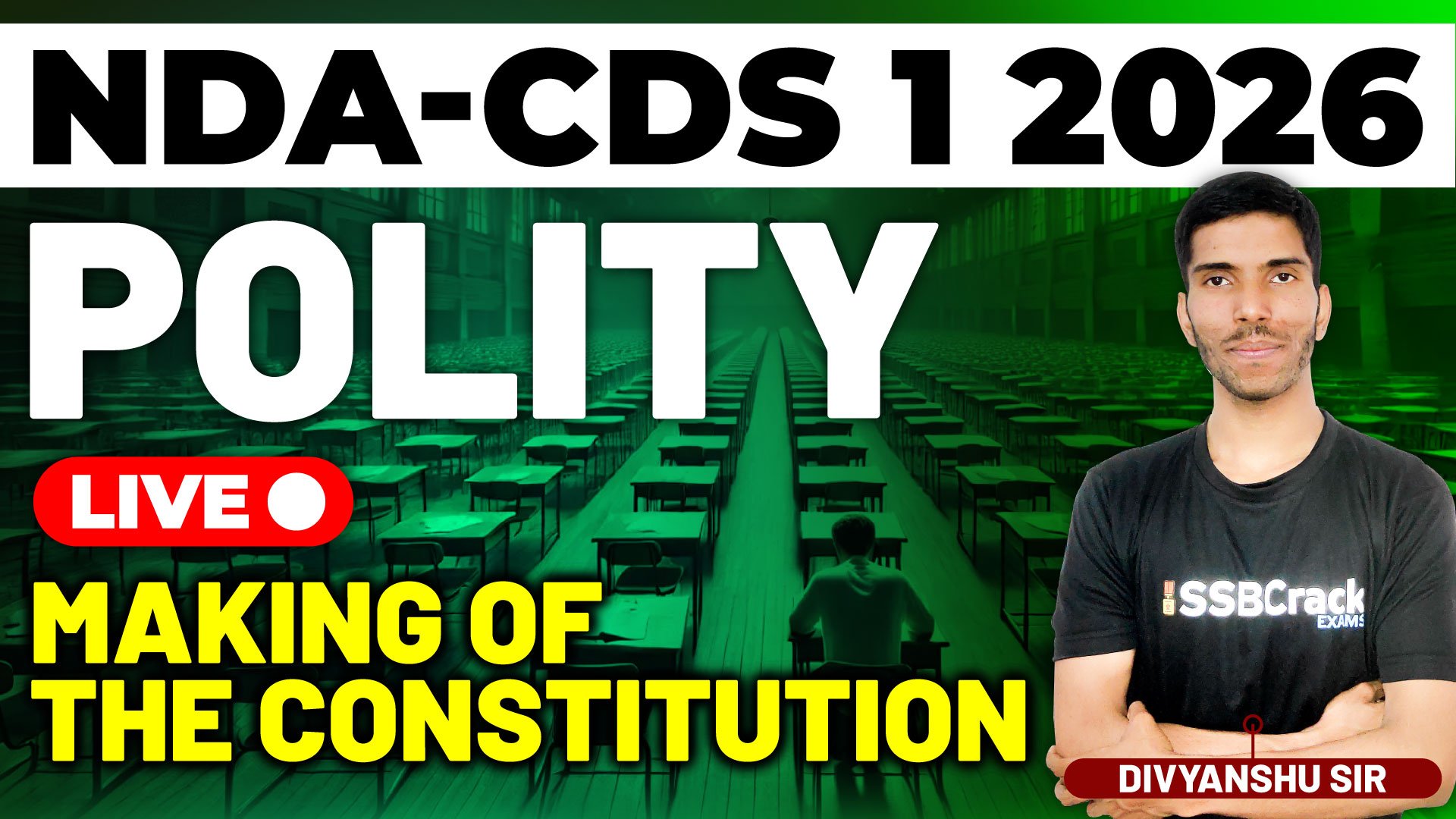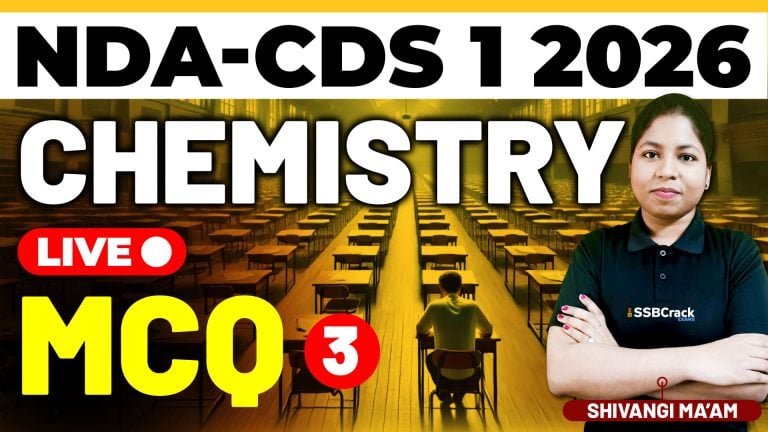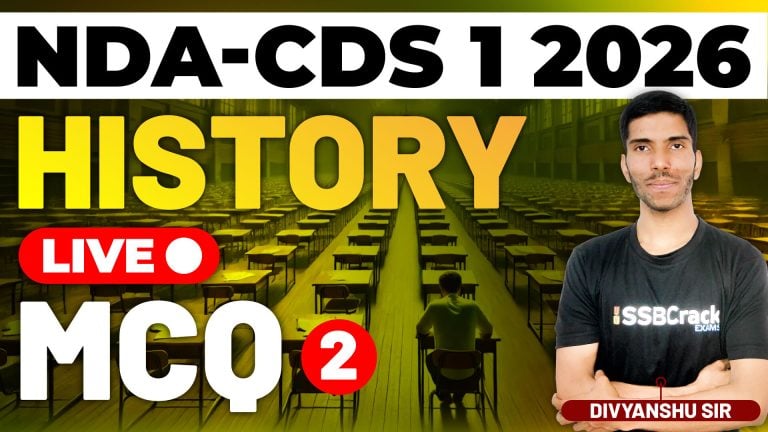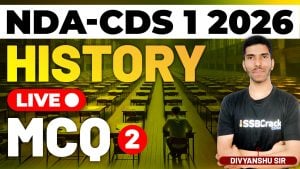The Indian Constitution is the supreme law of the land. It lays down the framework that defines political principles, establishes the structure of government, and guarantees fundamental rights to citizens.
NDA & CDS 1 2026 Exam Polity – Making of the Constitution
Background of the Constitution
Before India became independent in 1947, the country was governed under various acts passed by the British Parliament, such as the Government of India Acts of 1919 and 1935. However, these laws failed to meet the aspirations of the Indian people for self-governance. Thus, after independence, it became essential to draft a new Constitution that would reflect the ideals of justice, liberty, equality, and fraternity.
Formation of the Constituent Assembly
The idea of a Constituent Assembly was first proposed in 1934 by M.N. Roy, a pioneer of the Indian Communist movement. It was later supported by the Indian National Congress in 1935 and accepted by the British Government in 1940 under the August Offer.
- The Constituent Assembly of India was formed in 1946, based on the recommendations of the Cabinet Mission Plan.
- The total strength of the Assembly was 389 members – 292 from British India, 93 from princely states, and 4 from chief commissioner’s provinces.
- After the partition in 1947, the strength was reduced to 299 members.
First Meeting and Key Leaders
- The first meeting of the Constituent Assembly was held on 9th December 1946.
- Dr. Sachchidananda Sinha was appointed as the temporary president.
- On 11th December 1946, Dr. Rajendra Prasad was elected as the permanent president of the Assembly.
- H.C. Mukherjee became the Vice-President, and B.N. Rau was appointed as the Constitutional Advisor.
Drafting Committee
The most important committee of the Constituent Assembly was the Drafting Committee, formed on 29th August 1947 under the chairmanship of Dr. B.R. Ambedkar.
The committee consisted of the following members:
- Dr. B.R. Ambedkar (Chairman)
- N. Gopalaswami Ayyangar
- Alladi Krishnaswami Ayyar
- K.M. Munshi
- Syed Mohammad Saadulla
- B.L. Mitter (later replaced by N. Madhava Rau)
- D.P. Khaitan (after his death, T.T. Krishnamachari replaced him)
The Drafting Committee prepared the first draft of the Constitution in February 1948, and the final draft was submitted to the Assembly on 26th November 1949.
Adoption and Enforcement
- The Constitution of India was adopted on 26th November 1949.
- Some provisions, like those related to citizenship, elections, and provisional Parliament, came into effect immediately.
- The entire Constitution came into force on 26th January 1950, celebrated as Republic Day.
Important Facts
- The Constituent Assembly took 2 years, 11 months, and 18 days to complete the Constitution.
- The total cost of the Constituent Assembly was approximately ₹6.4 crore.
- The Constitution originally contained 395 Articles, 22 Parts, and 8 Schedules.
- It is the longest written Constitution in the world.
- The Preamble of the Constitution declares India to be a Sovereign, Socialist, Secular, Democratic Republic.
Sources of the Indian Constitution
The framers of the Constitution drew inspiration from various countries:
- British Constitution – Parliamentary system, rule of law, single citizenship
- U.S. Constitution – Fundamental Rights, impeachment procedure, judicial review
- Irish Constitution – Directive Principles of State Policy
- Canadian Constitution – Federation with a strong Centre
- Weimar Constitution (Germany) – Emergency powers
- Australian Constitution – Concurrent list, freedom of trade and commerce
- Soviet Constitution – Fundamental Duties (added later in 1976)
Significance of the Making
The making of the Indian Constitution was not just a legal or political exercise; it was a vision to create a democratic nation ensuring justice, equality, and liberty for all. The Constituent Assembly reflected the aspirations of the people of India and established the foundation for a vibrant and diverse democracy.
Conclusion
The making of the Indian Constitution stands as a monumental achievement in the history of independent India. The dedication, vision, and wisdom of the Constituent Assembly members gave birth to a document that continues to guide the world’s largest democracy. For NDA and CDS aspirants, understanding this process is essential to grasp the spirit of Indian Polity and governance.



















